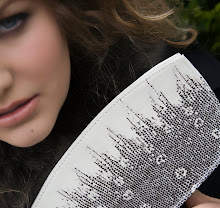The original pitch for Fossati handbags at start up weekend was to apply Threadless.com’s business model to high end handbags. Threadless is a T-shirt company that skyrocketed to popularity in 2007. Threadless business model is based on crowd sourcing and mass customization.
According to Wikepedia, Crowdsourcing is a distributed problem-solving and production model.
In its simplest form, crowdsourcing follows 8 steps:
1. Company has a problem
2. Company broadcasts problem online
3. Online crowd is asked to give solutions
4. Crowd submits solutions
5. Crowd vets solutions
6. Company rewards winning solvers
7. Company owns winning solutions
8. Company profits
Threadless follows this process to solve the problem, How to get an endless supply of hot designs almost guaranteed to sell on threadless.com. They ask consumers to contribute designs and to vet out the best designs. Threadless rewards winners for the best designs, taking ownership and profits.
It works because t-shirt design and mass customization are fairly simple. The compensation to winners is good and it’s become a platform for artists to promote their work. Even if you don’t win, you get a one of a kind t-shirt with your design printed on it for $12.00. This level of customization on a mass produced item at mass produced prices is called ‘Mass Customization’.
It worked really well for t-shirts and in 2008, threadless expanded to mass customization of bags. They partnered with Timbuktu, a bag manufacturer specializing in sturdy laptop bags.
Crowdsourcing and mass customization work well when you are printing onto a mass produced product like a t-shirt or canvas bag. It doesn’t work as well for more complicated product design like high end handbags. The model finally adopted for Fossati is call Social commerce. I’ll leave social commerce and how I settled there for another post.
Friday, May 1, 2009
Subscribe to:
Post Comments (Atom)




No comments:
Post a Comment